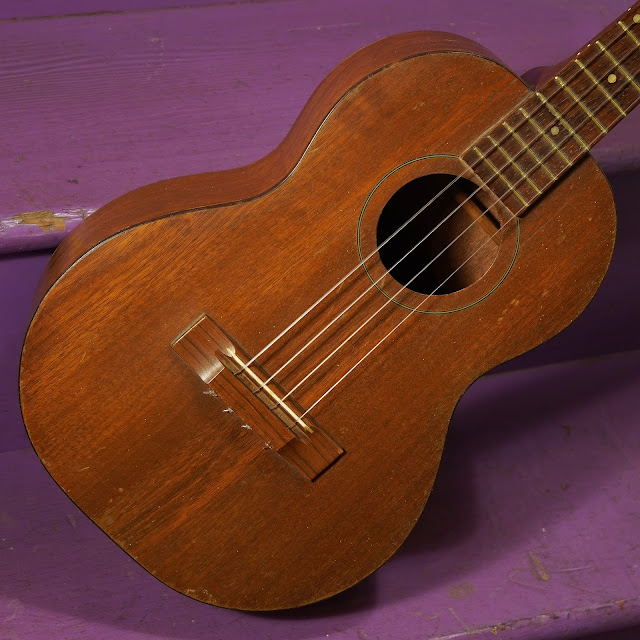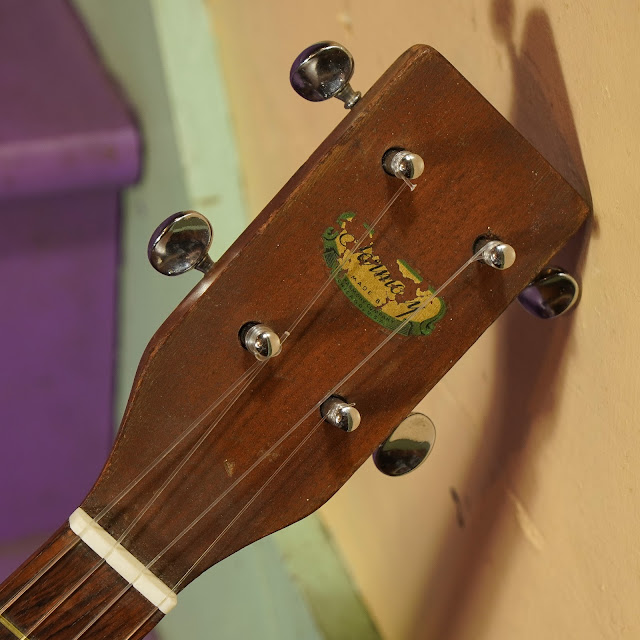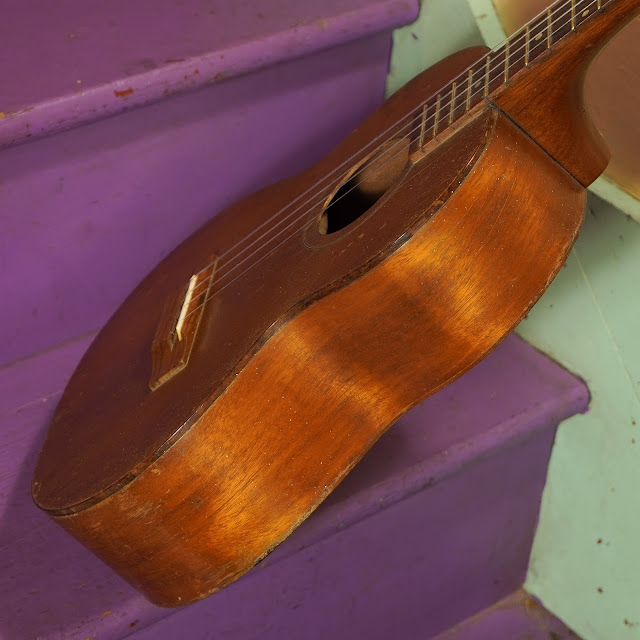1950s Harmony Baritone Ukulele
I was "paid" for some work last week in this baritone uke. It's somewhere between #30 and #40 in the lineup of Harmony baritones I've worked on and is in about the "normal" condition for these -- full of scratches, mild finish discoloration here and there, and overall quite used. It also needed the usual stuff to get going -- a neck reset, fret level/dress, some side dots, new bone nut, and parts-bin spare geared tuners. Who wants to struggle with the original friction pegs? Nooooot mee...
My friend Susie from town snagged this for herself the morning after I finished it. At some point, I imagine, a trade will be incoming to cover it. Ohhh, business!
Per the usual, it's got solid mahogany throughout, it's ladder-braced, there's Brazilian rosewood for the bridge and fretboard, the frets are brass, and because it's a '50s one the original nut and saddle would have been bone. The original saddle is still.
I've long-since tired of using 2-wound, 2-plain normal baritone uke sets and so I set these up with the D'Addario EJ99TLG (low G tenor uke) all-plain sets. That lets you tune to DGBE with all plain like a normal baritone, though it loses a little volume and the D string is kind-of soft. I think the balance, uke-like tone that you get with all-plain more than makes up for it, though.
















Comments